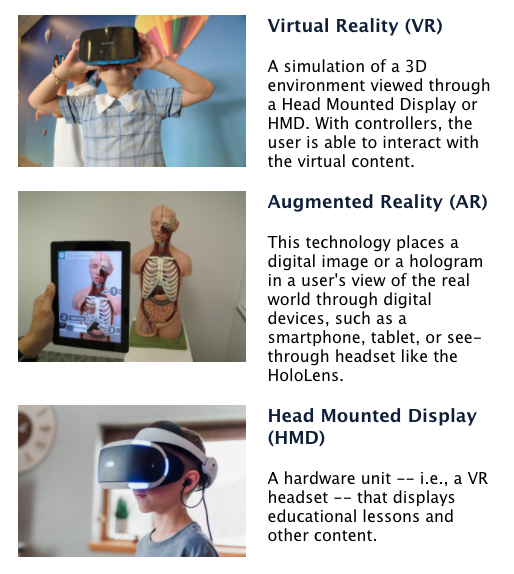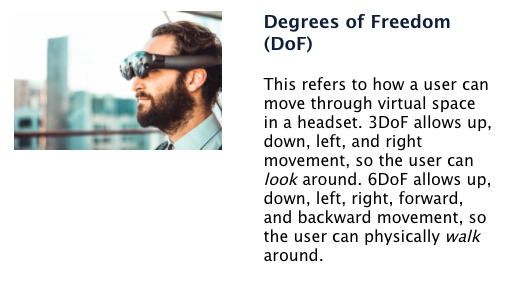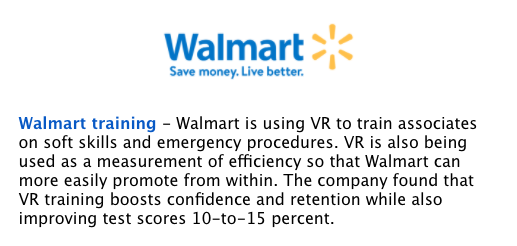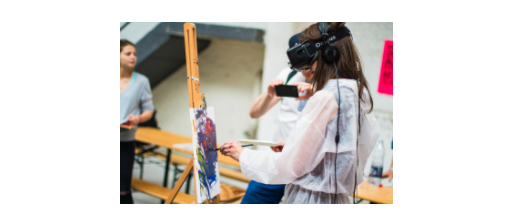Come meet us online during our VR/AR Global Summit ONLINE Conference+Expo on June 1-3
Contributors
Olivia Wenzel, Student & Founder of AltruTec, LLC, Ohio, United States
Sabarish Gnanamoorthy, Student, Founder of WaypointAR, Innovator at The Knowledge Society, Ontario, Canada
Mishaal Lakhani, Student & Innovator at The Knowledge Society, Ontario, Canada
Lina Nayvelt, Student & Innovator at The Knowledge Society, Ontario, Canada
Julie Smithson, Co-Founder of MetaVRse & XR Ignite, Ontario, Canada
Introduction
The Coronavirus has brought unprecedented challenges to our lives. In times of illness and mandated social distancing, we are forced to grapple with new contexts and standards for school and work. How do we stay safe and continue to communicate and collaborate effectively?
Virtual reality and augmented reality have come to the spotlight as superior mediums for facilitating social, educational, and work-related connections. In this issue, we help you establish a foundational understanding of these technologies.
Even in a pre-COVID-19 world, we were seeing VR and AR transform several industries, including manufacturing, healthcare and real estate. More industries are adopting and implementing immersive technologies into their business models, whether it be in training employees on soft and hard skills, building new airplanes, or presenting projects to clients or stakeholders. With this progress and in light of our present circumstances, it is imperative that we have our education systems prepare the next generations for these digital changes. This includes helping the next generation take ownership of the change agents, including but not limited to VR and AR, and facilitating a shift in mindset to lifelong, holistic learning and growth using technology, whereby education takes place at any time, anywhere.
Tech Terms
How is VR and AR Training Transforming the Workplace?
Many jobs are in the categories of DICE - an acronym coined by leading VR researcher and head of the Stanford Virtual Human Interaction Lab (VHIL) Jeremy Bailenson. DICE stands for Dangerous, Impossible, Counterproductive, or Expensive and Rare.
Training for jobs that are dangerous include situations that can’t easily be replicated. In particular, those would include heavy machine operations, deadly substances, or chemicals. VR is used to build scenario-based training that can repeat testing and ensure that employees can respond and act as needed. Training for jobs that are impossible include those that cannot be replicated, including situations of damage and emergency response. VR enables such training.
Training for jobs that bring counterproductive situations includes crashes caused by distracted driving and injury caused by incorrect movement of a ladder. VR eliminates injuries in training while allowing the practice of safe behavior until it becomes habitual.
Training for jobs that becomes expensive or rare applies to the training of surgeons with human and animal cadavers, of police with crowd control, among others.
In the next issue, we will discover even more ways that VR and AR are transforming the workplace, specific to this time of social distancing.
Who is Using VR/AR in Industry Now?
As a Parent, How do I Prepare My Child for their Future of Work?
VR and AR are not just about computer programming or the sciences. Every industry has begun the implementation of this technology into its workforce standards. In these times of unprecedented change, it’s become abundantly clear that every student must be ready to live and work in a digital, immersive technology-powered world.
Our Student Committee will continue to provide resources for parents and students to stay informed about the applications of this technology, especially in this time of social distancing. We hope that our resource will help bridge the gap in knowledge so that our students are ready for future opportunities in the workforce, all with parental support.
Students and parents can also begin preparing themselves and/or their children for the future of work by exploring current educational VR/AR experiences at home. We’ve listed a few AR applications to try out on your smartphones below. Whether you use these experiences to supplement the traditional classroom education or to dive into an entirely new concept, we’re sure you’ll reap benefit!
Takeaways
One of the most important takeaways we hope you walk away with is that learning is an exciting, lifelong process. Accordingly, your VR/AR educational journey should not end with this resource!
Please continue exploring and, if you’re a parent, sharing with your children VR/AR educational content. Be sure to check out the recommended resources below to learn more about VR/AR.
In this issue, we introduced you to VR and AR, gave you a glimpse into just how transformative these technologies are in the workplace, and provided a few resources and advice to help you prepare yourself and your child for this reality. In the next issue, we’ll learn some more vocabulary, see how VR and AR are helping in social and educational spaces (especially in this time of social distancing), discover which tools may be the right fit for specific use cases, hear from a student who is deeply involved in this technology, and see some more recommended resources!
If you're a student or a parent who needs more resources, please reach out to students@thevrara.com, and follow us on Facebook, Instagram, Twitter, and Snapchat @vrarastudents.








